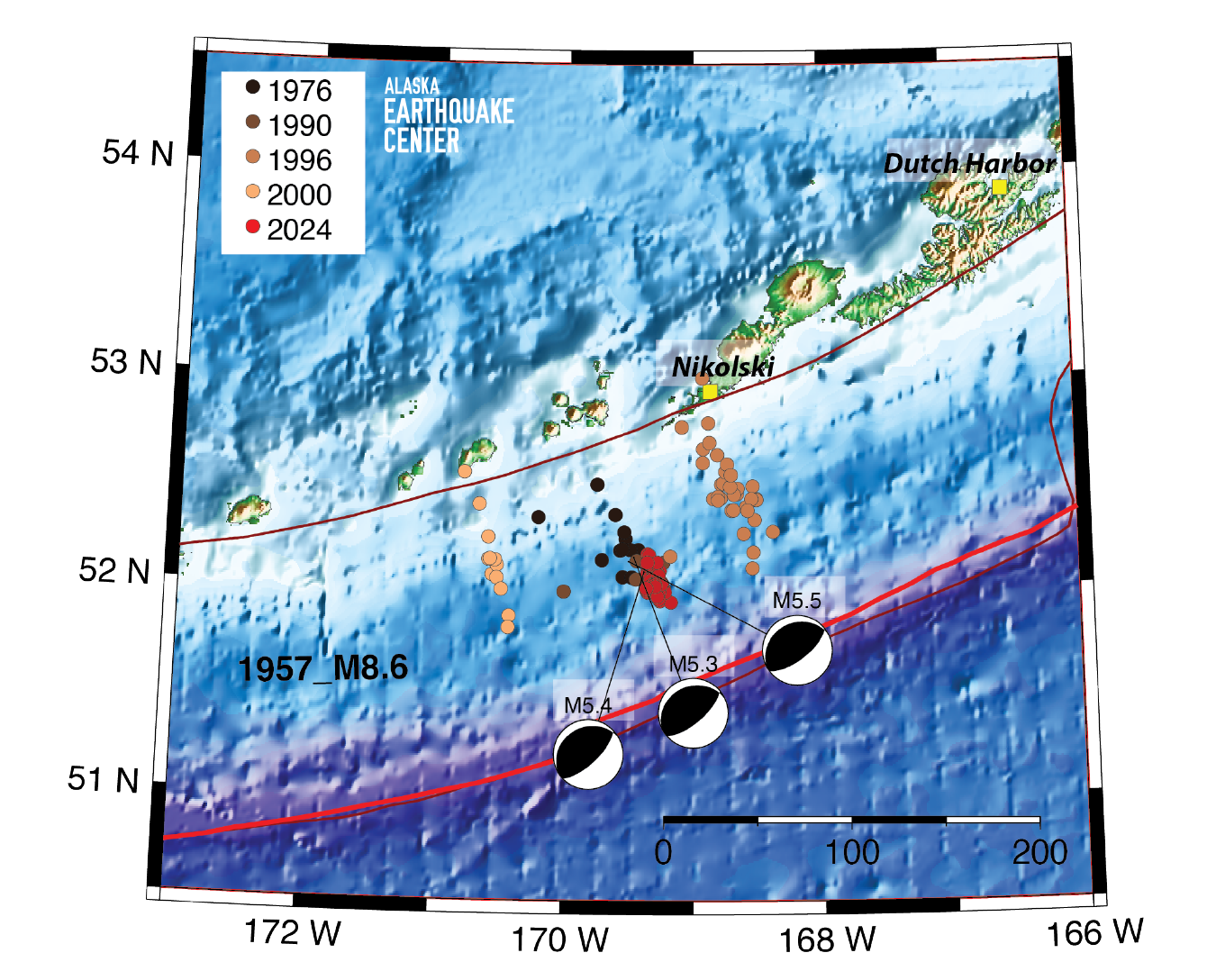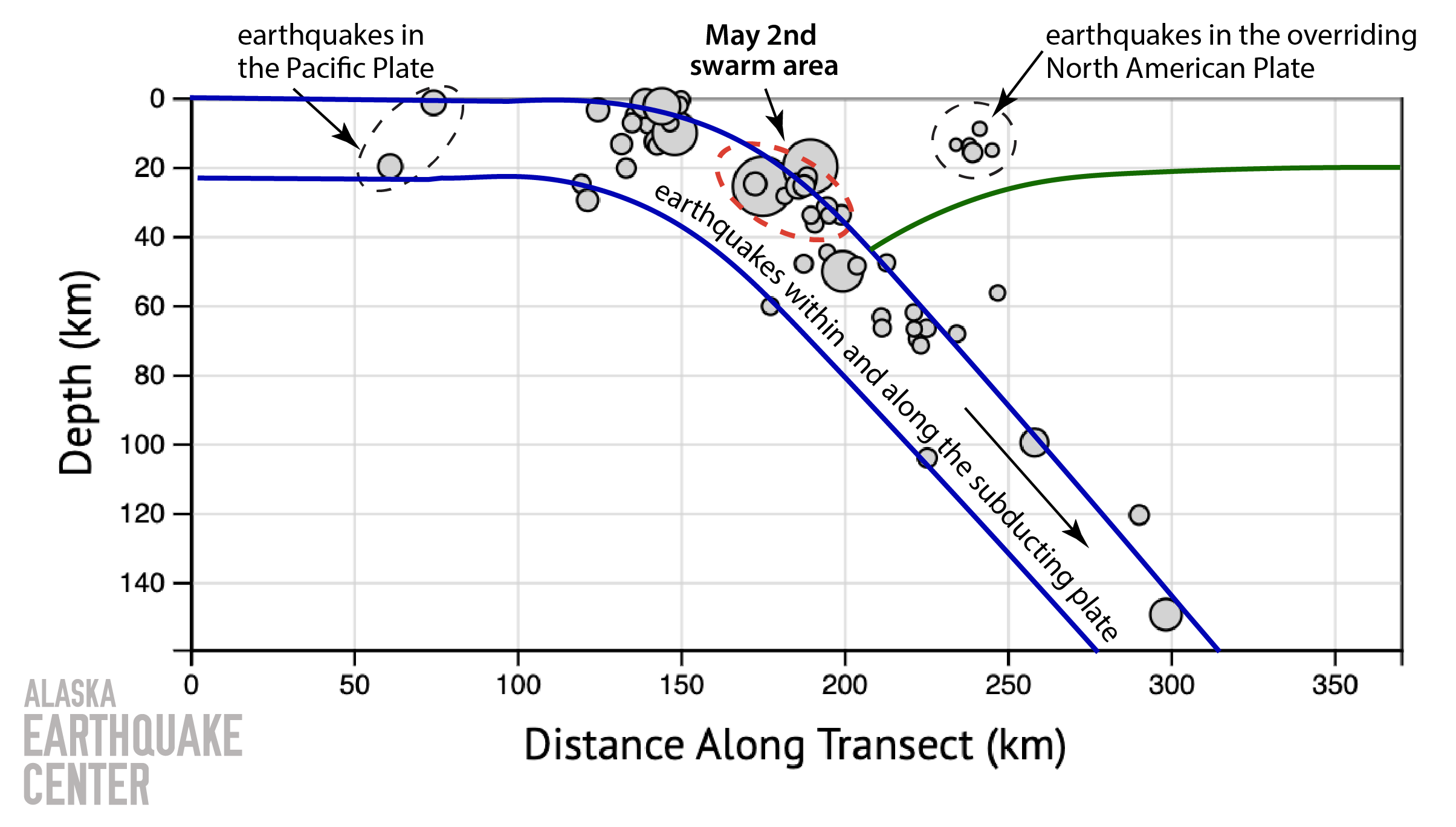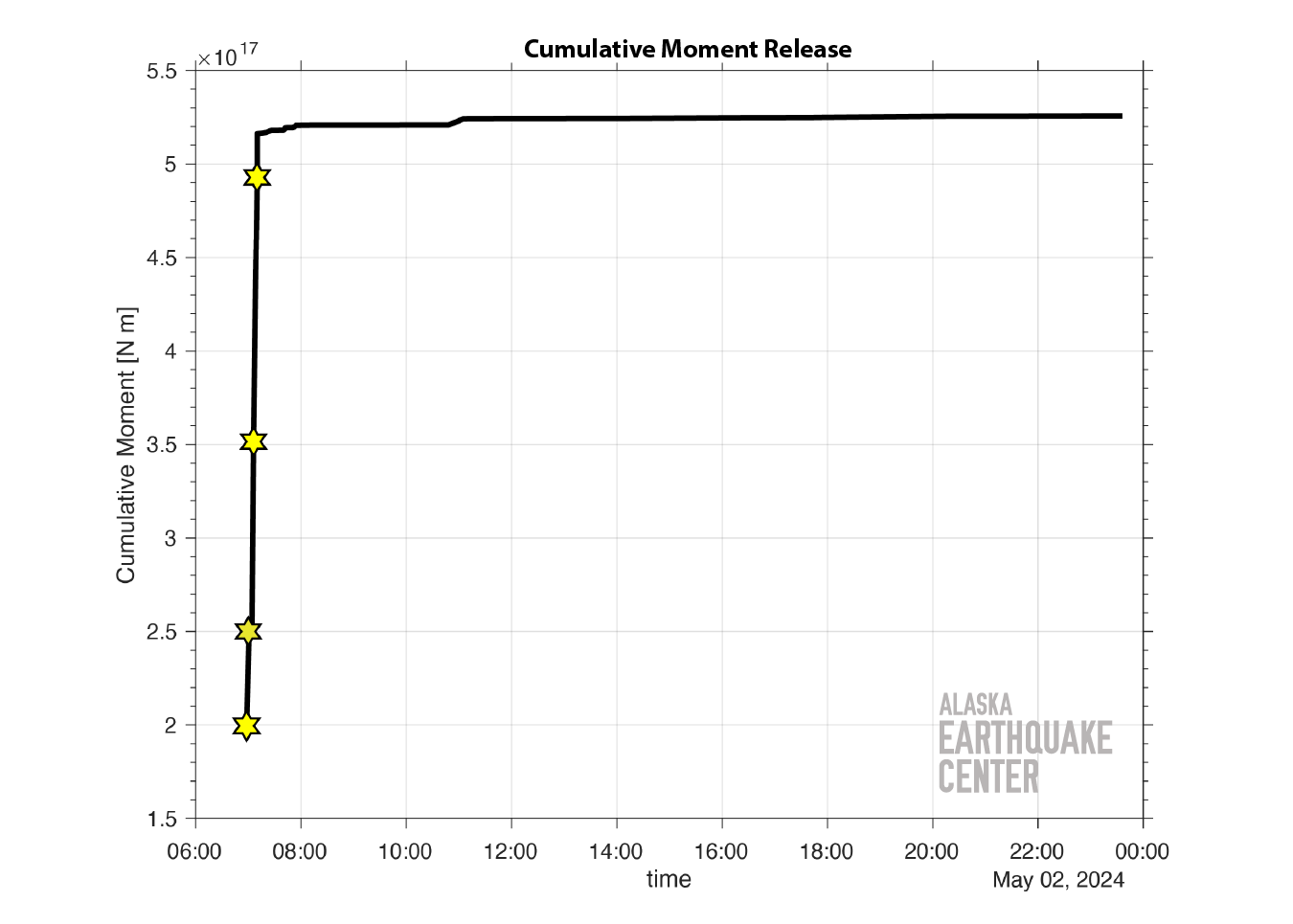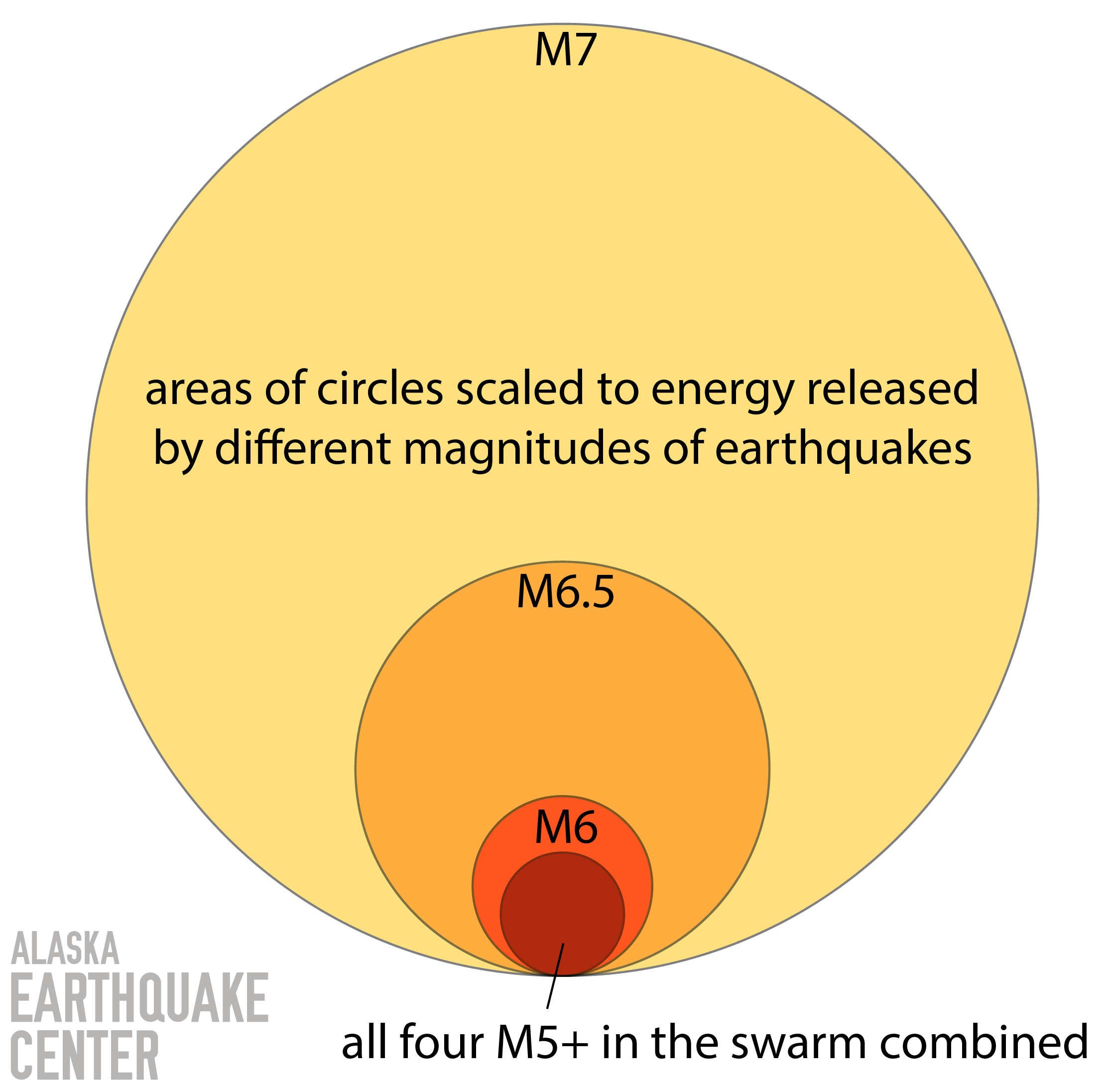




Late on May 1, 2024, a flurry of earthquakes rattled offshore of Herbert Island. In the span of 12 minutes, four earthquakes over magnitude 5 ruptured in the Fox Islands region of the Aleutian Islands (Figure 1). These four earthquakes were relatively shallow, ranging from 16 to 34 miles deep (Figure 2). These depths, along with the characteristic "thrust" fault movement (a shallow-angle fault where one side slides over the other), place them on the subduction zone interface, the tectonic boundary where the Pacific Plate pushes underneath the North American Plate.
Shah Khan, serving as the on-duty seismologist that night, recounted the experience. “When the first earthquake occurred, I immediately checked the data on my computer. As I was reviewing it, the duty alarm sounded again, followed by another alarm. Initially, I thought it might be a glitch, but it turned out to be separate earthquakes. The fourth one was so close to the previous event that I felt like it didn’t trigger the alarm since I was holding the phone in my hand confirming the previous alarm. Within an hour, there were nine earthquakes from that region. It was an adrenaline rush for me. Although it was thrilling, I hoped there wouldn’t be any more that night. Being at the forefront of such events feels like being part of the action, and I find it enjoyable.”
A string of more than 50 smaller earthquakes followed in the same area over the next day, keeping our on-duty seismologist very busy! These smaller events ranged from magnitudes 2.2 to 4.3 (Figure 3). Although there were no felt reports submitted, these earthquakes tell an interesting story about the region.
A cluster of several earthquakes of about the same magnitude is called a swarm–there is no clear-cut mainshock followed by smaller aftershocks (Figures 4 and 5). Small swarms of earthquakes like this are not unusual in the subduction zone along the Aleutian chain, they happen on average every couple years. In fact, in 1976 and 1990 there were swarms in nearly the same location as this most recent activity (Figure 1). Similar swarms happened in 1996 and 2000 slightly to the east and west of the most recent swarm. A more common behavior for the earthquakes along the plate boundary are larger mainshocks followed by aftershock sequences. From historical records, the mainshocks along the Fox Islands segment of the megathrust can reach M8+ intensity. While both types of seismicity release strain accumulated along the plate interface, they may reflect different properties of the ruptured faults.
Research into earthquake swarms along the Aleutian subduction zone indicates that swarms may occur along the edges of locked segments of the plates. These locked sections are called “asperities.” Regions around asperities are areas where the plates may not be as tightly locked together, resulting in strain accumulating and releasing unevenly. This uneven strain sometimes releases as a swarm of earthquakes instead of one large mainshock. Monitoring all types of seismic events helps us understand the complex nature of earthquakes along this major plate boundary in Alaska.




